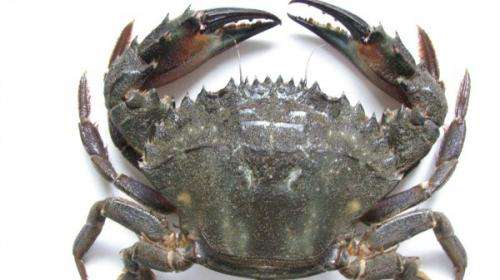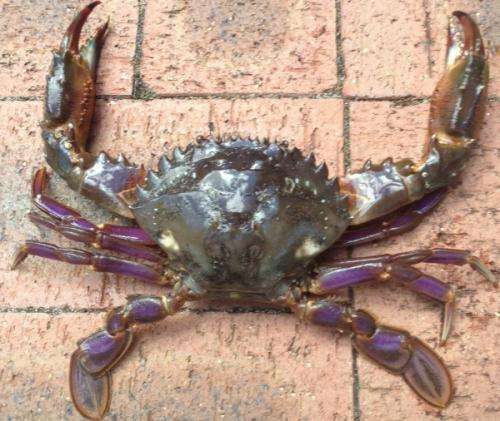Citizen scientists home in on crab menace

Perth fishermen have helped stop a 'nasty' crab invading West Australian waters which could have devastated local marine biodiversity.
The aggressive Asian Paddle Crab (Charybdis japonica) is found throughout south-east Asia and has a history of invading other waters; in New Zealand's North Island for example it has established itself by out-competing local crab species.
WA Fisheries scientist Mathew Hourston says introduced pests like this are one of the greatest threats to global marine biodiversity.
"Invaders like this can be very detrimental to the ecosystem and to get onto it early and get a handle on it, is very important in all biosecurity," Dr Hourston says.
"This is a really aggressive crab. People who have caught them in the Swan River have noted how nasty they are compared to our Blue Manna Crab.
"They also have potential to transfer diseases like white spot syndrome to other crabs and prawns."
The capture of a single crab in Western Australia in 2010 and again in 2012 resulted in widespread public awareness campaigns with flyers distributed through tackle shops, yacht clubs and hand-outs to fishermen by compliance officers.
Fisheries also launched intensive trapping assaults, with 935 traps placed over 12 months after each crab capture.
While the traps yielded nothing, a small number of crabs up to 10cm across the carapace (upper shell) were caught by members of the public in the Swan River in response to the public awareness campaigns.

Dr Hourston says the Asian Paddle Crab was an excellent candidate for a successful public awareness campaign.
"It's large and conspicuous; they really stand out a mile when you see them— because they are big and colourful with bright brown and purple patches," he says.
"We already had large numbers of crabbers out there, so it was a matter of designing a public information program to piggy-back on that.
"We've found the crab fishers have such great stewardship and ownership over the Swan and the crab fishery and they really want to do the right thing."
He says the campaign actively engaged the public in scientific research and dramatically increased the search effort for an invasive species to a level that would normally be cost prohibitive.
"Last one caught in January 2013. We're coming into the crabbing season now, and will be interested to see if anything turns up," Dr Hourston says.
Provided by Science Network WA



















